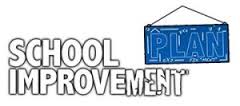School improvement efforts are being made all over the county. However, we face unique challenges. There is a mindset that everything must be “fixed” and that responsibility falls on the shoulders of the new administration. While best practices and systems are guided with strong leadership, the overwhelming and simple truth is: a measurement of growth needs to be established that will respectively align with the district’s vision and beliefs in education. Conversely, one person cannot do everything, be everywhere, nor implement all things necessary for transformation. There are far too many nuances and implications regarding school improvement, the focus has to be encompassing. Action through the lenses of the four frames will prove to be beneficial as leadership embarks through the SIG process. The role leadership plays ensues responsibility through each frame in order to successfully address the needs of students and staff. A healthy environment that is conducive to school transformation and improved climate requires consideration of all frames.
Multiple Frames and School Improvement in an Underserved Tribal Village
We will need to operate within the four frames: structural, human resource, symbolic, and political. Typically, new leadership will lean on one or two frames in courses of action, depending on comfort level and experience. When considering actions in all four frames, options will present themselves and the vision to see organizational improvements will expand. Eventually the shift from the paradigm of having to “fix” problems in a burst of reactive moves will lessen. Mindsets towards Stephen Covey’s Habit 1: Be proactive, will emerge to create an environment of multiple leadership opportunities and roles among staff. The evidence of “how we do school” will emerge as adult behaviors support the growth mindset.
Structural Frame
Procedures, policies and rules are needed for school safety and to meet the daily operational needs. We will need to play a role in how to create reliable reactions to structural fixes. Leadership teams are responsible for carrying out shared structural practices, as one cannot do alone. Practices here have changed often, for decades, due to the change in administration. Structures are broken and viewed as failing practices because they have not been followed with fidelity. Maintaining consistency in leadership is the utmost importance during School improvement. My community has suffered too many bouts of stress and trauma without the appropriate structural systems to support healthy recovery and response. Looking at school improvement through a structural frame allows reflection on what is working within the system that is consistent and predictable. When a system is not working, channeling the efforts towards solving a structural issue will improve quality of care.
Human Resource Frame
Schoolhouses are built on communities of people who need each other. School leadership must believe in their staff and build a trusting and caring environment. Through the recruitment and retention of new staff, we’ll need to take care of human resources by securing benefits, raises and providing professional development to attract the best teachers. Dollars should be spent on these types of initiatives. We are in a profession where public education, in general, is viewed as inadequate. The result is low teacher moral. Many of our societal problems are blamed on the public education. In order to support staff and view school turnaround as a direct result of thriving employees, we need to look through the human resource frame. We are in need of a cultural shift in academic climate. The result of direct instruction and good practice is student growth. When time and effort is spent on the professional development, practice, and reflection, teachers are empowered to be part of the turnaround. Right now, a culture of survival and blaming exits and student needs are not being met. Adult connections and relationships are an essential necessity to taking care of our students.
Political Frame
Moving a school district requires collaboration amongst the various factions within an organization. There are always factions, but the leverage and power that the factions have are unique and traditional strategies have not been effective. Community leaders and the school must work together, but sharing common resources is political. Political facets sometimes interfere with the development of their community. Those facets bleed into the school, especially when community leaders also hold positions on the school board. There are unclear boundaries and the lines between public school policy and community practices intertwine. While operating in this frame, leadership will have to develop the leadership skills to manage and facilitate practices that are sensitive to the political aspects. We’ll also be responsible for the development of the proficiencies of community leaders. This partnership is mandatory for school improvement to move forward. Current leaders and board members don’t engage in initiatives that will cause them to take a stand on opposing issues, as it puts them in a vulnerable spot. It is imperative that cliques, influential families and political forces don’t sacrifice good practice. Instead, all parties must unite for the common good of the school. Unfortunately, setting aside history, experiences and cultural nuances have proven to be challenging.
Symbolic Frame
School leaders must always communicate the “whys” to the organization and school improvement. Most educators go into the profession because of a belief in the profession. Through time, frustrations, constant change, and experiences, educators become cynical and moral declines. Agenda’s must be prioritized and initiatives must be able to reacquaint educators with beliefs that support the values that brought them to the profession. When efforts are recognized and evidence of growth is celebrated, it’s easier to align behavior to our beliefs as a motivator. There is no way to micro-manage every action within the organization, the symbolic frame must reinforce a shared culture that influences all behaviors and values. Whether we are mindful or not, school leaders are always operating in the symbolic frame. Schools are seen as a sanctuary for the community and superintendents / principals are viewed as inspirational leaders in the community.

Be First to Comment